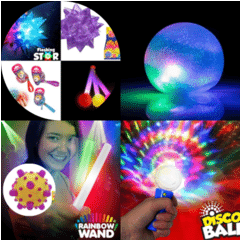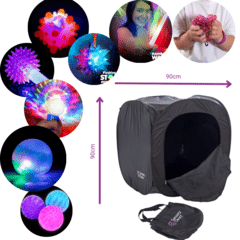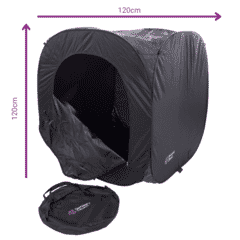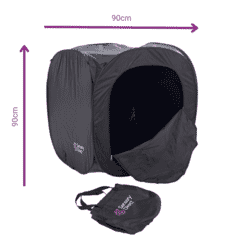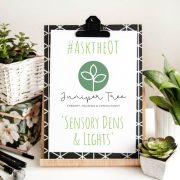Get exclusive deals you won't find anywhere else straight to your inbox.

Guest Blog - Sensory Processing
The Teacher Who Came To See
Sensory processing for those with autism
In my role as an autism specialist advisory teacher, I refer to a range of sensory products in communication with schools, families and young people themselves.
Sensory processing is an area that is relevant to everyone, even more so for those with neurodivergencies such as autism, ADHD or sensory processing disorder.
What is sensory processing?
Imagine that you're driving to an important meeting. You know the first part of the route well and you feel quite relaxed, with your favourite music playing loudly.
As you approach an unknown part of the journey, you notice a difficult junction ahead. What is the first thing you do? I know for me, it is to turn the music off.
In that moment I can no longer process the additional layer of sound on top of all the visual input and my heightened anxiety levels.
Sensory processing and young people
This is very similar to the experiences of our young people too. Our sensory tolerance can change throughout the day. This may depend on the environment, types of sensory input and your personal mood/state.
Think back to a time when you were ill. Could you enjoy all of your usual foods or did they suddenly taste bland or too strong?
Perhaps you could no longer stand the aftershave/perfume of your partner? Or the smell of your washing powder suddenly smelt far more obvious than usual.
Often when we are under the weather, we experience short-term sensory changes. As a result, we may become more aware of our senses, or they may feel heightened.
We know that schools can be quite a sensorily-overwhelming environment.
Think about the numbers of people in one building for a start and then add onto that all the different sounds and smells coming from each one of them!
Add the smell of cooking from the dinner hall and a smelly PE lesson (those PE kits haven't been washed since the start of term!) and that's just the olfactory (smell) and auditory (sound) senses.
We haven't even touched on visual (sight), gustatory (taste), tactile (touch), proprioception (body awareness), vestibular (balance) and interception (internal messages).
Sensory meltdown or shutdown 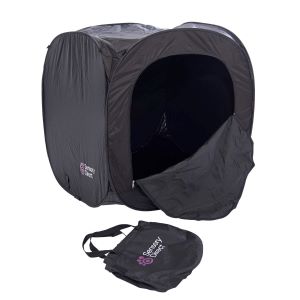
For some young people, the combination of this high level of sensory input coupled with difficulties in regulating all this information, can lead to sensory meltdown, or shutdown.
This is when everything becomes ‘too much’ and the individual needs time and space to regulate.
It's a bit like a computer shutting down and restarting (example shared by R.S. Schneider, 2015).
Now, the school environment isn’t always set up to provide young people with a space for this to take place. However, you can create that place – a ‘place of peace’ by using a sensory den.
What is a sensory den?
A sensory den is an area deliberately set up to provide specific sensory input.
Black-out dens/tents are often used to limit the visual input and create a calming and safe space for the young person to retreat to.
The aim of this can be to self-regulate from a sensory perspective but also from an emotional one.
These can be used both in school and at home. Some families use this as a ‘decompression’ activity to manage the transition at the end of the day from school to home.
There is no ‘one-size fits all’ formula for a sensory den. They should be adapted based on the sensory likes and dislikes of the young person.
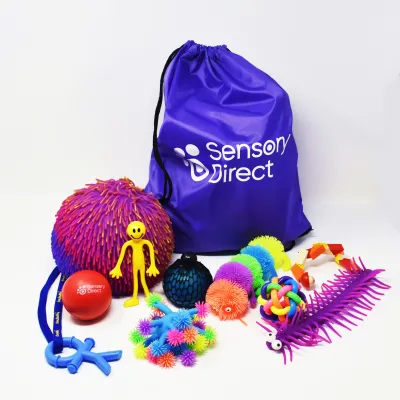 Some individuals may love light up objects inside the dark-den. For others this may be too much visual input.
Some individuals may love light up objects inside the dark-den. For others this may be too much visual input.
Some may like different textures or materials in the den Others may enjoy fidget toys or tools for stimming.
Whatever the preference, the concept is that this is a place they can go to.
It is not a punishment, but is used to self-regulate, so that they are in a calm-alert state.
Really, skills like this are what it’s all about in this busy world – developing a sense of self and boosting wellbeing.
Article written and submitted by Rebecca Duffus, The Teacher Who Came To See.
Rebecca regularly posts top tips and resources via her Instagram and Twitter pages.
You can follow her on Instagram @theteacherwhocametosee and on Twitter @rebeccaduffus
https://www.instagram.com/theteacherwhocametosee/
https://twitter.com/rebeccaduffus


